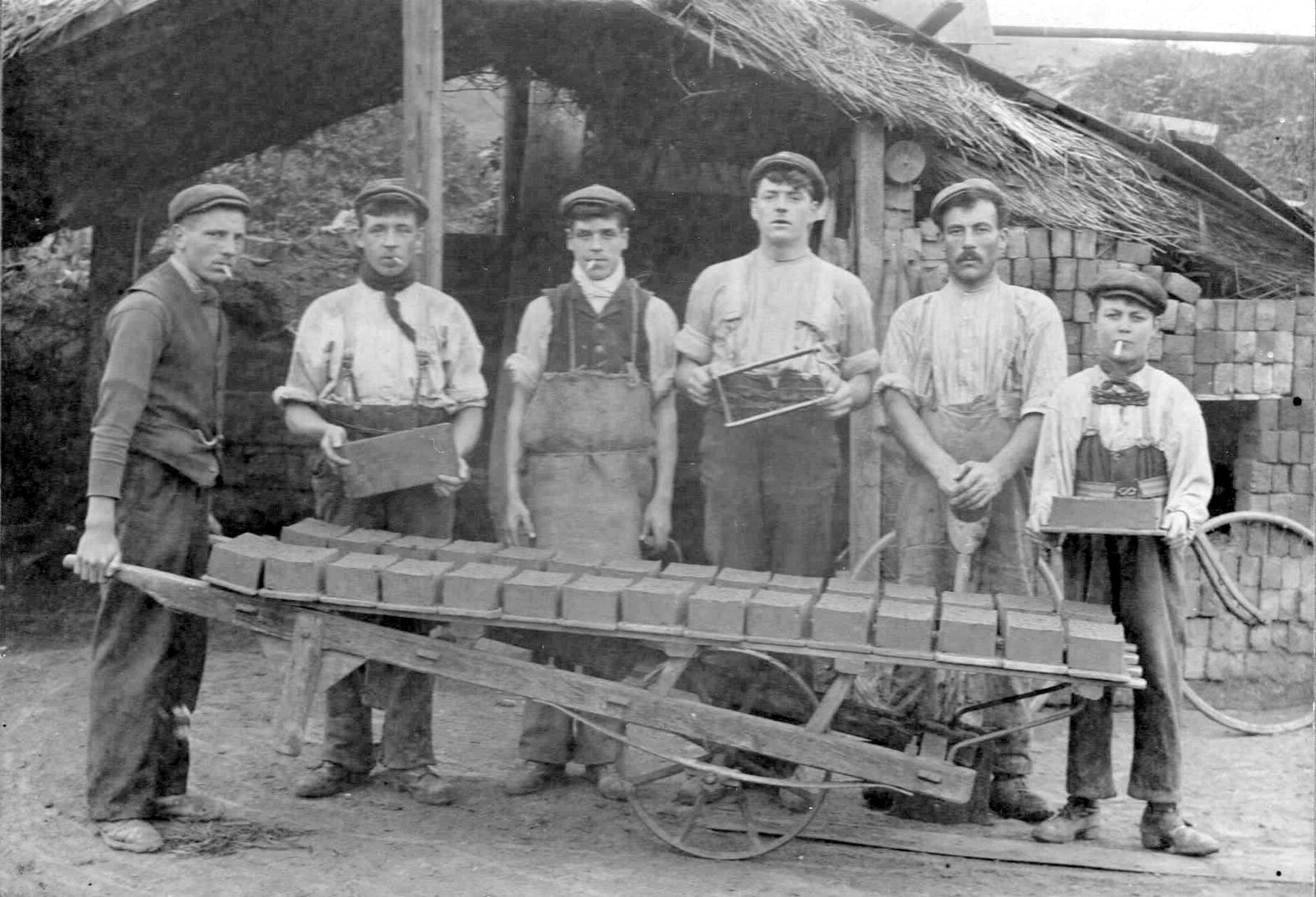History
Brick making was brought to Britain by the Romans, but fell into decline after their departure and it was not unusual for bricks to be reused from rundown buildings or excavations. The earliest known post-Roman bricks date from the early-thirteenth century, when Flemish bricks were imported. The quality of British brick making rose to an adequate level and the numbers of imported bricks declined. However, it was not until the early-fifteenth century when a large number of Flemish and Dutch craftsmen came to settle in England that the quality of English bricks increased. During this period, all brickmakers travelled to the construction site to make bricks from the local clays.
From the 1380s, the craft was regulated, at first by church guilds and then later by specific guilds of tylers (or brickmakers). The oldest of these which still survives is the Worshipful Company of Tylers and Bricklayers, founded in 1416 and Chartered by Queen Elizabeth I in 1568.
Following the Great Fire of London 1666, Charles I designated that all new buildings in the city be built of fireproof materials. The Tylers' Guild did not have enough members to undertake the work, so relaxed their admission regulations and trained people from the provinces to make bricks. After this, there was an explosion in the industry and many hundreds of new brick makers and builders set up business around England as itinerant brickmakers.
Mechanisation came to the brickmaking industry in the 1820s and with improved transport infrastructure – first canals and then railways – permanent brickyards became established which could produce many thousands of bricks per day with a smaller workforce than was needed to produce them by the old hand craft system. By 1850 the majority of brickmakers used mechanised brick production. The small country yards, unable to invest in machinery, were either bought out or driven to closure, and itinerant brickmakers could not compete with these big factories.
By 1914 there were probably no more than fifty travelling brick makers in the British Isles (including the whole of Ireland). Prior to World War Two, this had dwindled to half a dozen and today there is only one, Tony Mugridge. The other itinerant brickmaker, Noel Pycroft of North Hayling Island, Hampshire, retired circa 1990. Today, all other brick manufacture is carried out in established permanent brickworks.
Although the sizes of bricks altered across areas and through the centuries, by the early-nineteenth century bricks were manufactured to a statute which required that they should be twice as long as they were broad, normally being 8 by 4.5 inches or 9 by 4.5 inches.

Techniques
Brick clay, having been dug from the selected ground and tested for suitability, is picked clear of unwanted matter and then mixed to the right consistency for brick making. Historically, the clay would be tempered by the weather and water under foot in open pits for two to three days. The clay is then thrown into wooden moulds to form the shape of the brick. When moulding a brick, it is vital that no air is trapped inside the clay. Excess clay is removed by running over the mould with a wire.
The moulds are then turned out onto barrows and taken to a flat, south-facing field and laid out to dry for two days and two nights, being turned during that time to assist initial drying, then turned again on edge and stacked in rows, one on top of the other, to dry for a period usually extending between one and three months depending on the weather and time of year.
When the bricks are deemed dry enough, they are fettled (trimmed of “flash” and stacked to form a kiln in order to bake them. Flues are set into the kiln and fuel is then prepared (usually timber) or in Ireland turf (peat) is used. The fires are lit and the bricks are “burnt” in kilns containing between 800 and 1,000 pieces. The firing usually takes two to three days (including the nights continuous firing and reach a temperature of around 1,040 degrees Centigrade. The kilns are then allowed to cool naturally and after two days cooling can be dismantled and the bricks sorted and stacked ready for use.
The colour of the brick is determined by the chemical composition of the clay, the fuel used to fire the bricks, and the levels of oxygen available during the firing process. Iron oxide give the brick a red colour, very high levels of iron oxide give a blue colour, limestone and chalk added to iron gives a buff/yellow colour, magnesium dioxide gives a deep blue colour, and no iron or other oxides gives a white colour.

Local forms
Colours and textures of finished bricks depend on the type of clay in an area and the weather conditions and fuels used to fire them – different regions have different traditional bricks which depend on the local clay.
Historically, bricks varied in size depending on the moulds used by the travelling brickmakers who made them.

References
- Lynch, Gerard, The History of Gauged Brickwork
- The Regency Town House, Brick making
- Tony Mugridge
- ‘Suffolk heritage brick maker cements reputation with national accolade’, East Anglian Daily Times (28 November 2018)








